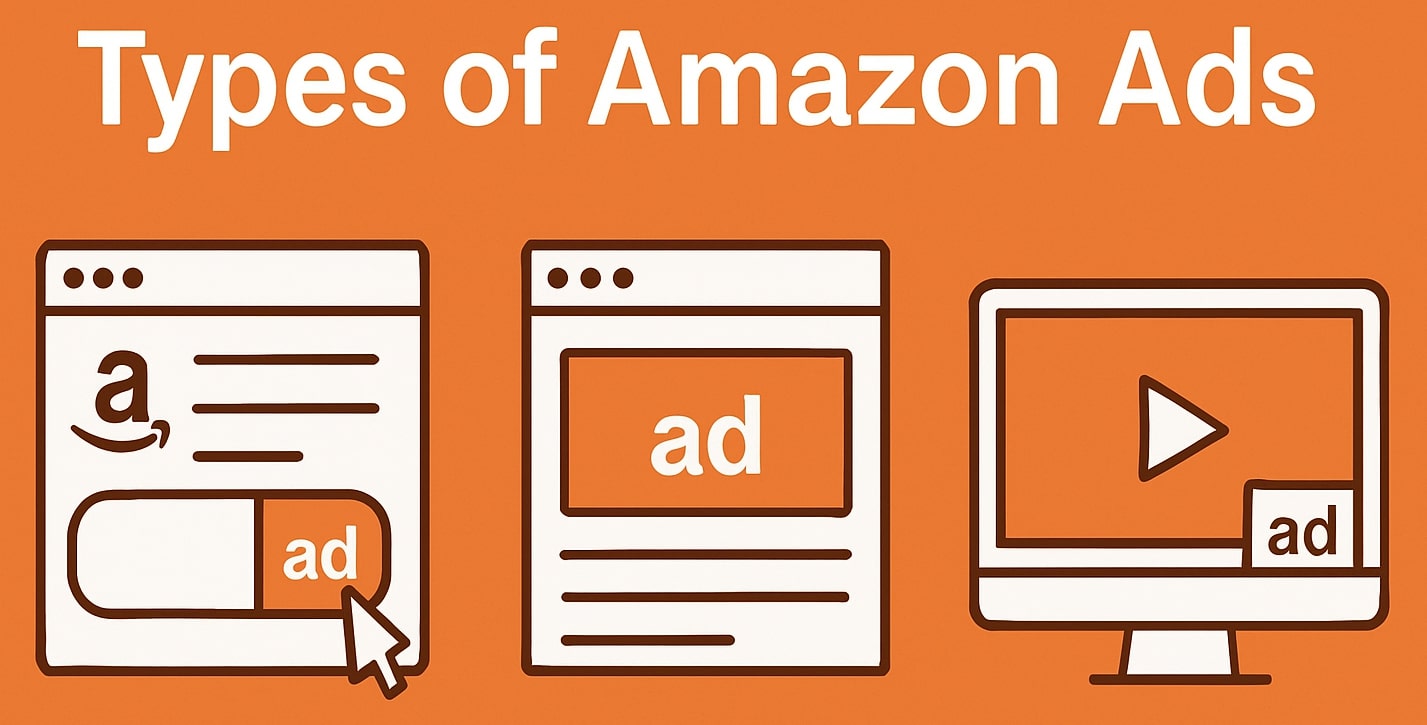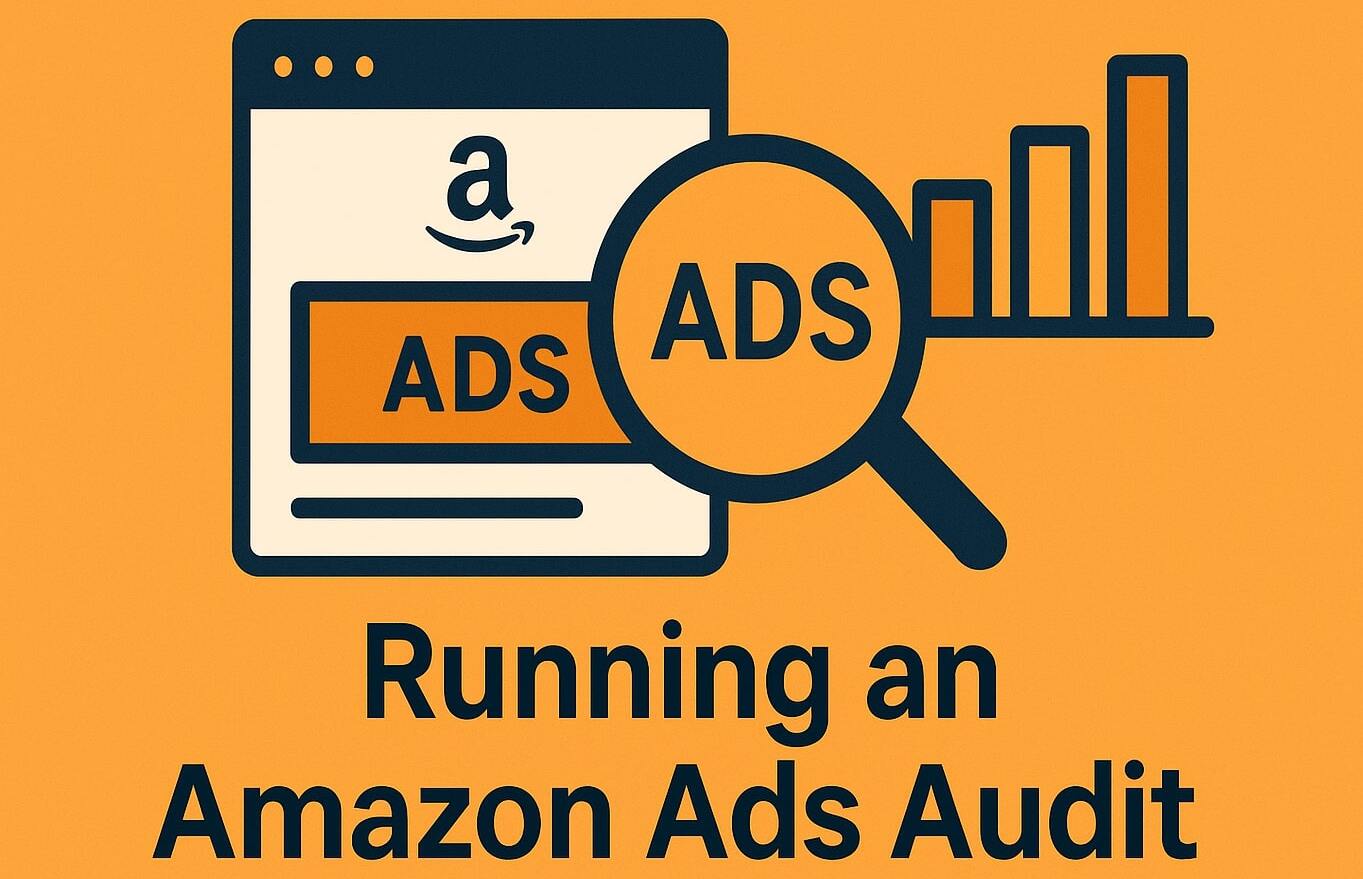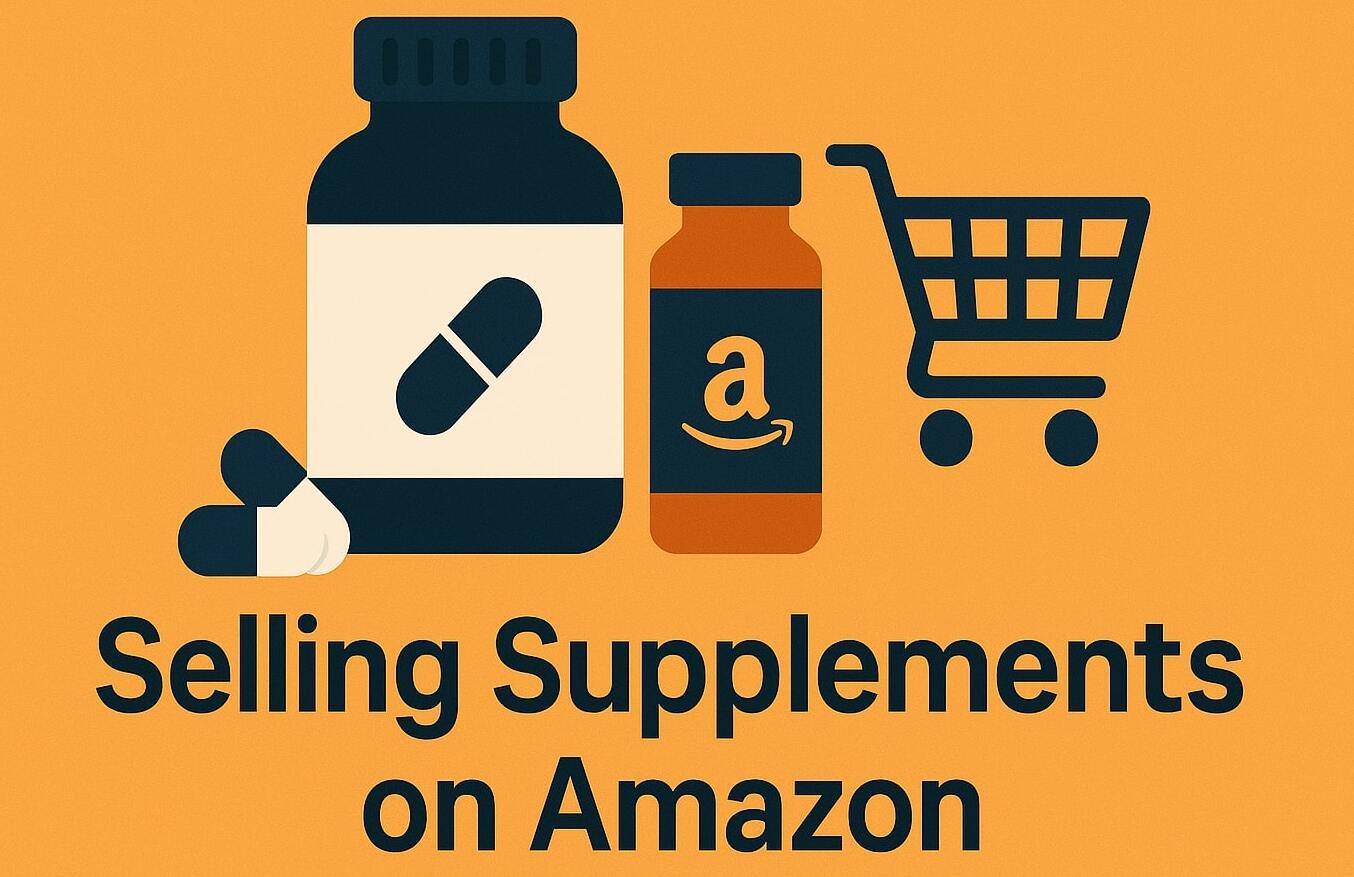Advertising plays a crucial role in helping Amazon sellers scale their brands and stand out in a competitive marketplace. To succeed, sellers need to understand the different types of ads available and how each can impact their visibility, sales, and overall growth strategy. By mastering Amazon’s advertising options, sellers can unlock new opportunities to reach their target audience and stay ahead of the competition.
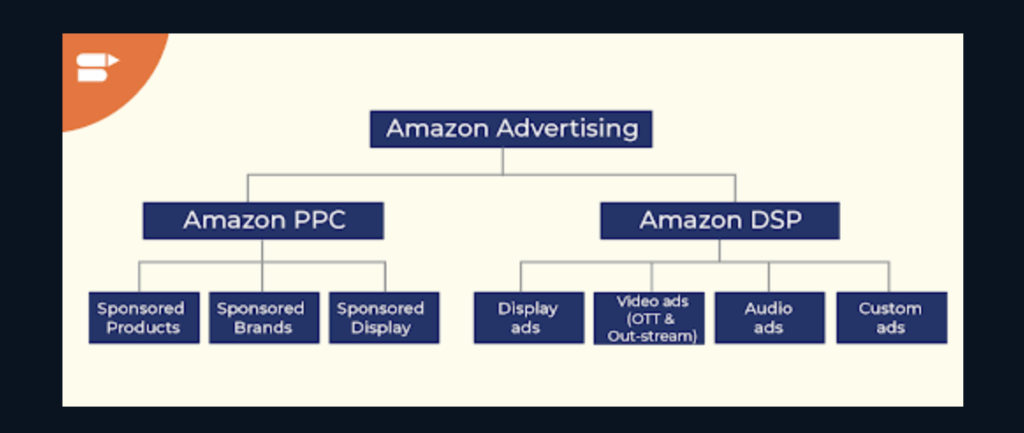
Is Your Amazon Store Reaching Its Full Potential?
Discover hidden opportunities, reduce wasted spend, and boost your sales with a free expert audit.
Our team will analyze your listings, ad performance, and overall account health to uncover exactly what’s working—and what’s holding you back. You’ll get a tailored blueprint to scale smarter, not harder.
Get a Free AuditWhat are the types of Amazon ads?
As mentioned before, Amazon PPC ads come in three distinct sub-categories:
- Sponsored Brands: These ads showcase your brand with a custom headline, logo, and multiple products, helping to increase brand awareness and drive traffic to your Amazon Store or a landing page.
- Sponsored Product Ads: These are pay-per-click ads that promote individual products, appearing in search results and product pages to drive visibility and sales.
- Product Display Ads: These are display ads that target specific audiences based on shopping behavior or interests, appearing on product pages, in customer reviews, or off-Amazon placements to retarget and engage customers.
Here’s a more in-depth look at each of the types of Amazon PPC ads:
Sponsored Brands Ads
Sponsored Brands Ads are a type of Amazon PPC advertising designed to enhance brand visibility and drive customer engagement. These ads appear prominently in search results and feature a custom headline, brand logo, and a selection of products.
Sponsored Brands Ads work by targeting relevant keywords, which allows advertisers to showcase their brand to shoppers actively searching for similar products. When you use this type of ads, your business can direct traffic to your Amazon Store or a landing page, effectively increasing both brand awareness and potential sales.
One of the key advantages of Sponsored Brands Ads is their ability to help businesses establish a strong brand presence on Amazon. By prominently showcasing your brand and products in search results, these ads not only enhance visibility but also build trust with shoppers, leading to higher click-through rates and increased conversion potential.
Where do Sponsored Brand Ads appear?
Sponsored Brand Ads typically appear at the top of Amazon search results, above organic listings. They are designed to increase brand visibility by showcasing a custom headline, your logo, and a selection of products. These ads can also appear on product detail pages or within shopping results, making them a powerful tool for driving brand awareness and traffic to your store or product portfolio.
How much do Sponsored Brand Ads cost?
The cost of Sponsored Brand Ads operates on a pay-per-click (PPC) model, meaning you only pay when a shopper clicks on your ad. The actual cost per click depends on the competitiveness of the keywords you bid on and your selected bid amount.
To control their ad spending, advertisers set daily budgets and bids for each keyword. Amazon determines the cost through an auction system, where the highest bidder for a keyword wins the placement, but only pays slightly more than the second-highest bid.
As a general note, the average CPC (Cost per Click) for Amazon Ads in 2024 was $0.97 and the average ACoS (Advertising Cost of Sales) generally varies somewhere in the 25%-36% range.
Expert tips for Amazon Sponsored Brand Ads
Although there’s no “recipe” to running ultra-successful Sponsored Brand Ads, in our experience, there is a series of things you can do to significantly increase your chances of success. For example, you can:
- Optimize your keywords. Conduct thorough keyword research to identify high-performing and relevant search terms. Use a mix of broad, phrase, and exact match types to maximize reach and precision.
- Craft compelling ad creatives. Design visually appealing and informative ad creatives. Ensure that your logo, headline, and product images align with your brand’s message and connect with your audience.
- Leverage brand storytelling. Use custom headlines and imagery to tell a story about your brand. Highlight what makes your products unique to differentiate yourself from competitors.
- Focus on high-value products. Promote products with high sales potential and positive customer reviews to maximize conversion rates and justify ad spend.
- Monitor campaign performance. Regularly analyze key metrics such as ACoS, CTR (click-through rate), and conversion rates to identify trends and uncover optimization opportunities.
- Use negative keywords. Exclude irrelevant search terms through negative keywords to prevent wasting budget on clicks that are unlikely to convert.
- Experiment with bid adjustments. Test and tweak bids for top-performing keywords to find an optimal balance between visibility and profitability.
- Leverage Amazon’s features. Utilize advanced tools such as dynamic bidding and suggested bids to streamline your campaigns and improve efficiency.
- A/B test creatives and headlines. Experiment with different versions of your ad creatives to determine what resonates best with your audience.
- Invest in brand analytics. Use Amazon’s brand analytics to gain insights into customer behavior and refine your targeting for better results.
By following these tips and staying up-to-date with Amazon’s advertising policies and best practices, you can effectively use Sponsored Product Ads to increase brand visibility, drive traffic to your store or product pages, and ultimately boost sales on the platform.
Sponsored Products Ads
Unlike Sponsored Brands Ads that promote an entire brand portfolio, Sponsored Products Ads allow sellers to target individual products based on relevant keywords. These ads appear in various locations on Amazon, including search results and product detail pages.
One of the primary advantages of Sponsored Product Ads is their ability to target shoppers who are actively searching for products similar to yours, ensuring high intent and relevance. These ads help increase the visibility of your specific products by appearing in key locations, such as search results and product detail pages, which can drive more clicks and conversions.
Additionally, Sponsored Product Ads operate on a pay-per-click model, making it a cost-effective way to advertise, as you only pay when a shopper engages with your ad. This form of advertising also provides detailed performance metrics, allowing sellers to optimize their campaigns and achieve better results over time.
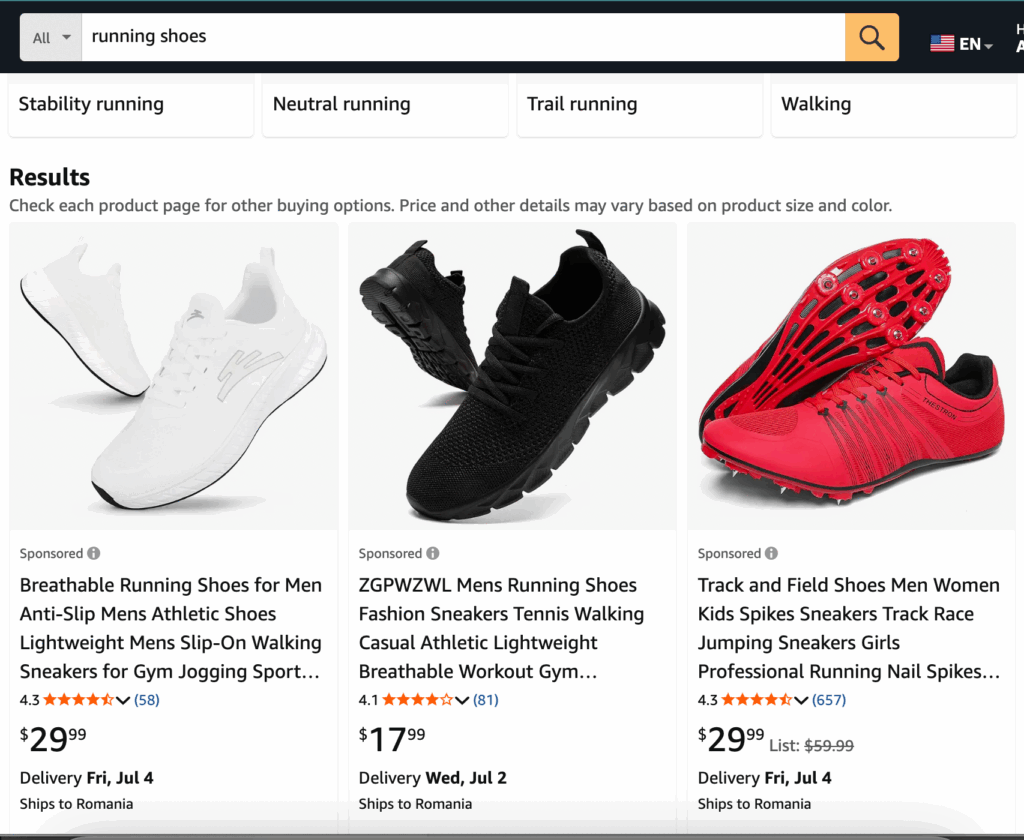
Where do Sponsored Product Ads appear?
Sponsored Product Ads appear in prominent locations on Amazon, including the top of search results, product detail pages, and even alongside organic listings. These strategic placements ensure maximum visibility, helping to capture shoppers’ attention at critical moments in their purchase journey.
How much do Sponsored Product Ads cost?
Same as in the case of Sponsored Brand Ads, the cost of Sponsored Product Ads is determined through an auction system, where advertisers only pay slightly more than the second-highest bid. The actual cost per click depends on factors such as keyword competitiveness and bid amount.
To control their ad spending, sellers can set daily budgets and bids for each keyword. Additionally, Amazon offers features such as dynamic bidding and suggested bids to help optimize campaigns and achieve better results.
Expert tips
Here are some tips to help you make the most out of Sponsored Product Ads’ benefits for your Amazon store:
- Leverage advanced keyword research tools like Google Keyword Planner, Ahrefs, or SEMrush to identify high-traffic, relevant keywords with the right balance of search volume and competition.
- Focus on long-tail keywords that align closely with user intent to improve ad targeting and ROI.
- Analyze keyword trends, competitor data, and seasonality to refine your list and ensure your ads reach the right audience at the right time.
- Leverage negative keywords to avoid spending on irrelevant searches. What negative keywords do, basically, is prevent your ad from showing when a user types in those words. For example, if you’re selling golf clubs, but don’t want to waste ad spend on people looking for used golf clubs, adding “used” as a negative keyword will exclude your ad from showing in those search results.
- Test different ad variations, including headlines, images, and descriptions, to see which ones drive the best results and improve conversion rates over time.
- Monitor your campaigns regularly and make adjustments as needed to optimize performance and reach your advertising goals.
Product Display Ads
Product Display Ads are a digital advertising format that showcases specific products to potential customers. These ads use data like search behavior, browsing history, or demographics to target relevant audiences. For example, if someone recently searched for a product, ads for that item or similar ones may appear to encourage conversion. Advertisers can configure campaigns to reach shoppers at different buying stages, ensuring their ads are shown to those most likely to buy.
The key benefit of product display ads is their ability to boost visibility and drive sales efficiently. By targeting specific audiences with high-quality visuals and compelling offers, businesses can increase click-through and conversion rates while building brand awareness. This makes them valuable for eCommerce businesses of all sizes.
Where do Product Display Ads appear?
Product Display Ads typically appear on Amazon and across various websites or apps within an ad network (Amazon themselves cite thousands of external apps and websites they show these ads on.) Product Display Ads are strategically placed on product pages, search result pages, and even competitor listings to capture the attention of shoppers who are actively browsing for similar products. They may also show up on external websites, retargeting users who have previously interacted with your product.
How much do Product Display Ads cost?
The cost of Product Display Ads depends on the ad platform and pricing model, such as cost-per-click (CPC) or cost-per-thousand-impressions (CPM). On platforms like Amazon, advertisers compete in a bidding system where costs can vary based on competition within the product category. While CPC rates commonly range between $0.50 and $3.00, it’s essential to monitor your ad spending and optimize for ROI by targeting the right audience and adjusting bids based on performance.
Expert tips for Amazon Product Display Ads
Here are some of the tactics you might want to employ to really leverage the power of Product Display Ads:
- Target strategically by focusing on high-performing keywords and competitor products to maximize visibility
- Use compelling visuals like high-quality images and clear, engaging headlines to improve click-through rates
- Monitor and adjust by regularly reviewing campaign performance metrics like CTR, conversion rate, and ACoS to refine your advertising strategy
- Leverage retargeting to reconnect with users who showed interest in your product but didn’t convert
- Optimize your product page with strong copy, images, and reviews to improve conversion when users click on your ad
If you want to learn more about any of these types of ads, keep in mind we have extensive guides on how to leverage Amazon advertising:
Additional Amazon Advertising Solutions
Aside from the aforementioned main types of Amazon Ads, the platforms also provides a variety of advanced advertising solutions to help sellers and brands achieve their goals. These tools allow you to target specific audiences, increase visibility, and drive sales more effectively. Below are some key options to explore.
Lock Screen Ads
Lock Screen Ads are a powerful way to reach customers directly on their Kindle devices. These ads appear on the lock screens of Kindle e-readers and Fire tablets, targeting users with personalized content based on their interests and reading habits.
Amazon Attribution
Amazon Attribution provides valuable insights into how your off-Amazon advertising efforts are driving sales on Amazon. By tracking the performance of your external marketing channels, such as social media, email campaigns, and search ads, you can optimize your strategies and make data-driven decisions.
Amazon DSP
Amazon Demand-Side Platform (DSP) allows you to programmatically buy display, video, and audio ads both on and off Amazon. With advanced targeting options, you can reach your audience across multiple channels to increase brand visibility.
https://www.youtube.com/watch?v=-mel-8i9GKA
Struggling to Scale on Amazon?
Get a free expert audit and uncover quick wins to boost sales and cut ad waste.
Get a Free AuditIs it the right time to run Amazon Ads?
The short answer is yes. Running Amazon Ads will not just help you direct traffic to your product listings, but it also enables you to boost your organic search ranking. The more sales and clicks you get from Amazon Ads, the higher your product listing will rank in relevant search results, leading to increased visibility and potential sales.
Moreover, with a variety of advertising options available on the platform, there is no one-size-fits-all answer when it comes to determining the right time for running ads. It ultimately depends on your business goals, competition within your niche, and budget. What’s certain is this, though: there is at least one type of Amazon Ads suitable for your specific situation.
We can help with that, by the way. And if you want to take things to the next level and master Amazon PPC, check out our very own Mina Elias’ PPC University — a full, end-to-end, comprehensive guide to all things PPC. It’ll take you from a PPC rookie to an advertising maestro in no time!
FAQs
There are three main types of ads: Sponsored Products, Sponsored Brands, and Sponsored Display.
Amazon PPC advertising campaigns include Automatic Targeting and Manual Targeting campaigns.
Ad groups are subsets within a campaign that group related ads and keywords for better organization and targeting.
ACOS (Advertising Cost of Sales) measures the efficiency of your ad spend by dividing ad spend by sales (ACOS = Ad Spend ÷ Sales).
CPC (Cost Per Click) is the amount you pay each time someone clicks on your ad.

